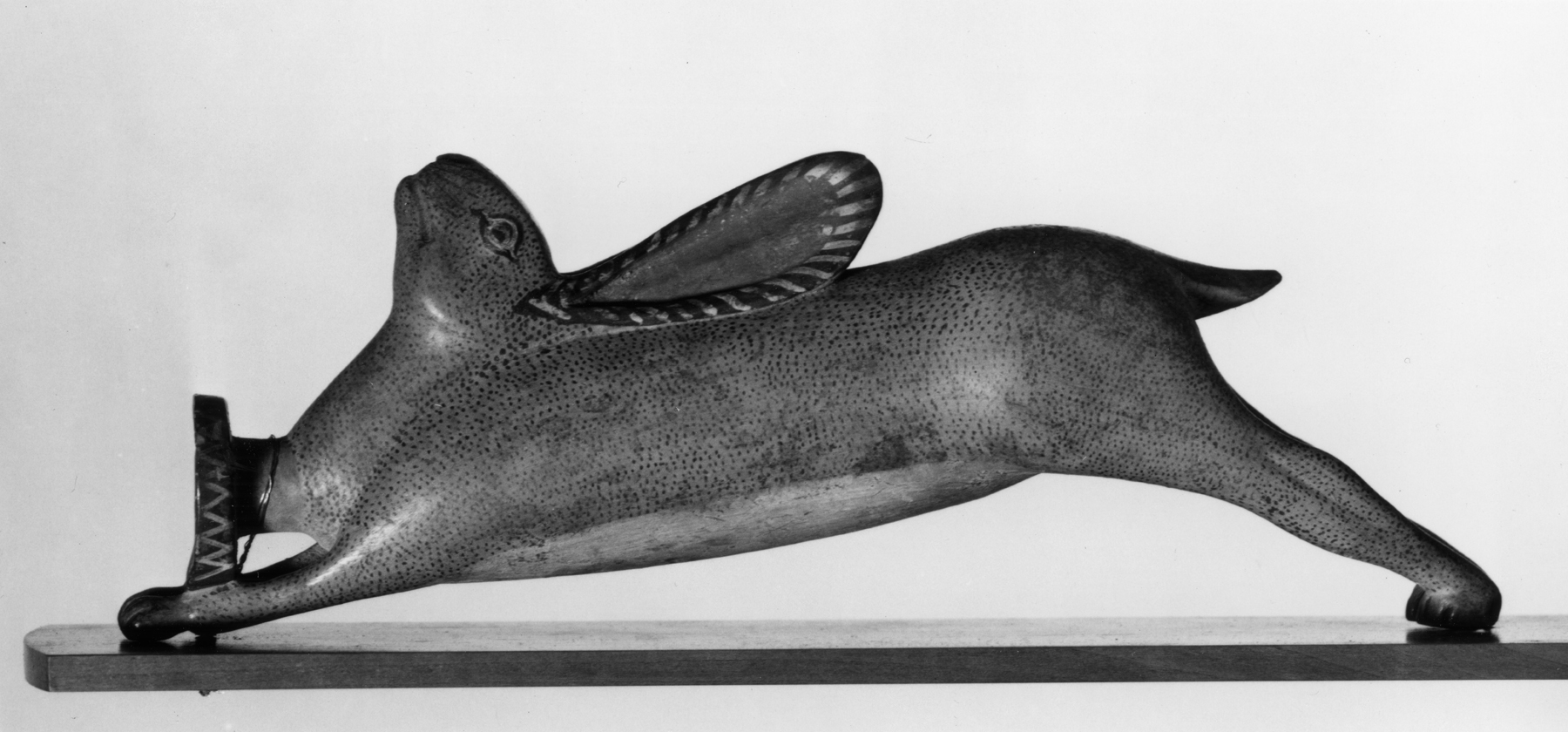Alabastron in the Form of a Dead Hare
(Roman Empire )
As if suspended by the fore feet, the elongated form of a dead hair is adapted into an alabastron. The vessel’s thin, dark brown neck protrudes from the hare’s chest, and the top of the vessel’s mouth – which is incised with a leaf pattern – connects to the hare’s fore feet. The thin body of the hare is painted a shade of ochre and decorated with rows of fine brown dots suggesting fur. The outer edges of the hare’s ears are painted in the same dark brown, over which are radiating white lines. The interior of the ears are bright pink and were possibly repainted more recently. The hind legs and fore feet have also been restored.
Pottery vessels in the shape of animals were used as containers for perfumed oil. Similar containers are known from Corinth and Rhodes, but the type of clay and other details suggest that this example belongs to a group made by artisans of Greek origin who established workshops in Etruria in the middle of the 6th century BCE.
Provenance
Provenance (from the French provenir, 'to come from/forth') is the chronology of the ownership, custody, or location of a historical object.
Alessandro Castellani, Rome [date and mode of acquisition unknown]; Collection sale, Alessandro Castellani, Rome, 1884, no. 36 [p. 7]; Dikran Kelekian, Paris and New York [date and mode of acquisition unknown]; Henry Walters, Baltimore, 1931, by purchase; Walters Art Museum, 1931, by bequest.
Geographies
Italy (Place of Origin)
Measurements
5 x 2 1/8 x 9 7/16 in. (12.7 x 5.3 x 24 cm)
Credit Line
Acquired by Henry Walters, 1931
Location in Museum
Accession Number
In libraries, galleries, museums, and archives, an accession number is a unique identifier assigned to each object in the collection.
In libraries, galleries, museums, and archives, an accession number is a unique identifier assigned to each object in the collection.
48.196


